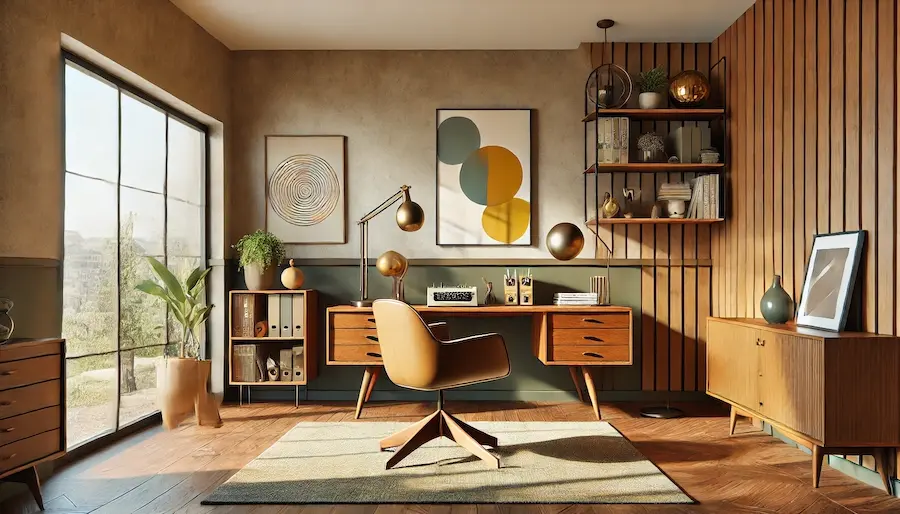Mid-century modern office rooms blend functionality with timeless design, creating workspaces that are both efficient and aesthetically pleasing. This article explores their history, key features, applications, considerations for selection, and concludes with insights into their enduring appeal.
History and Origins of Mid-Century Modern Office Rooms
Emerging in the mid-20th century (roughly 1945 to 1969), mid-century modern design is characterized by clean lines, organic forms, and an emphasis on functionality. In office settings, this translated to furniture and layouts that promoted efficiency and reflected the technological optimism of the era. Designers like Charles and Ray Eames were instrumental in introducing ergonomic furniture that combined form and function, influencing office aesthetics significantly.
Key Features of Mid-Century Modern Office Rooms
- Clean Lines and Organic Shapes: Furniture pieces often feature sleek, straightforward designs with gentle curves, avoiding excessive ornamentation.
- Natural Materials: A prominent use of wood, especially teak and walnut, complemented by metal and glass elements.
- Functional Furniture: Emphasis on pieces that are not only stylish but also serve practical purposes, such as desks with built-in storage.
- Neutral and Earthy Color Palettes: Incorporation of muted tones, occasionally accented with vibrant colors like mustard yellow, teal, or burnt orange.
- Integration of Nature: Inclusion of indoor plants and large windows to create a connection with the outdoors.
Applications of Mid-Century Modern Office Rooms
- Corporate Offices: Adoption of mid-century modern design to convey professionalism while maintaining a welcoming atmosphere.
- Home Offices: Creation of inspiring and functional workspaces within residential settings, reflecting personal style.
- Co-working Spaces: Utilization of mid-century elements to offer a blend of comfort and efficiency for diverse professionals.
Considerations When Choosing Mid-Century Modern Office Rooms
- Authenticity vs. Reproduction: Deciding between vintage pieces and modern reproductions, considering factors like budget and availability.
- Ergonomics: Ensuring that furniture not only fits the mid-century aesthetic but also meets contemporary ergonomic standards.
- Space Planning: Arranging furniture to maintain an open and uncluttered environment, characteristic of mid-century design.
- Lighting: Incorporating appropriate lighting solutions, such as pendant lights or floor lamps, to enhance the workspace ambiance.
- Personalization: Adding personal touches through artwork or decorative items that complement the mid-century modern theme.
Conclusion
Mid-century modern office rooms offer a harmonious blend of style and functionality, making them a popular choice for both corporate and home workspaces. By focusing on clean lines, natural materials, and practical furniture, these spaces create an environment conducive to productivity and aesthetic appreciation.
